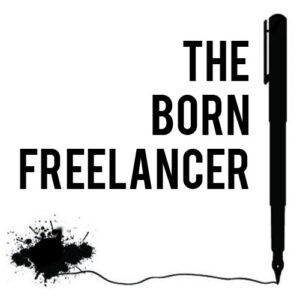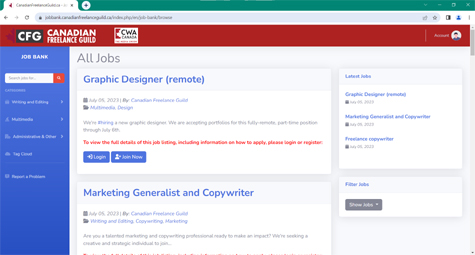This series of posts by the Born Freelancer shares personal experiences and thoughts on issues relevant to freelancers. Have something to add to the conversation? We’d love to hear from you in the comments.

It's part of the darker side of the creative process, rarely put under the public microscope.
The late great Christopher Plummer, in a 2011 CBC Radio interview recently rebroadcast on the always engaging "Writers & Company" claimed -- and I am paraphrasing -- that anger is an absolute necessity for any kind of meaningful artistic activity.
That struck an immediate and responsive chord within me.
Now I don't appear to be an angry person.
Indeed, I don't feel like an angry person. I believe myself to be a pretty even-keeled, well-balanced kind of individual.
Well, for a writer anyway.
But almost all of us have the capacity for anger at times. I know I do.
So what do I do with mine?
Lean in closer.
It's one of my best kept secrets.
When angered I use it to help drive my creativity and increase my productivity.
Anger - the deep dive
As Christopher Plummer so eloquently alluded, anger can be a great motivator in producing creative work of significance.
Anger about any kind of injustice, or overlooked worthy subjects, about wronged individuals, or simply displaced from personal experiences, can force you to sit at a keyboard and compose with a focus and intensity few other emotions can provide.
And therein lies its danger and potential folly.
Properly harnessed, anger is an emotional driving force of nature that will provide you with the energy and willpower to see through to completion almost any worthy creative endeavour.
Used inappropriately or simply blindly, without employing our considerable mitigating powers of reflection and contemplation, the results can be potentially damaging and an embarrassing misfire which we might live to regret.
History provides us with a famous freelancer well-known for his fiery temperament which, when provoked, could often burst into great anger which he used to foment works both regrettable and worthwhile. At least one, ill-conceived out of an injured swollen ego; yet another, well-founded out of a sense of great injustice.
The famous freelancer? A name from the entertainment firmament over a hundred years ago you will know at once and yet probably never think of as being a freelancer - although that is exactly what he was for almost all of his very successful professional life.
Harry Houdini.
The world's most famous escape artist, magician, editor, publisher, author and talented self-employed artiste.
The ultimate freelancer.
His public career even all these years later gives us two very illuminating cases of anger-motivated creative activity, with two very different results.
A negative result
Robert-Houdin, one of Houdini's biggest heroes -- indeed, his professional name Houdini is a direct homage to Houdin -- was a great French magician who lived during most of the nineteenth century. He is still regarded in the relevant circles as an innovative thinker and originator of many of magic's most important tricks and illusions.
The great man had long passed by the time a young and newly-famous Houdini came to France in the early 20th century to pay honour to his great hero. Many accounts claim that he was snubbed by Robert-Houdin's aging widow, who refused to see him or even acknowledge him. This was enough to drive the young headstrong thin-skinned egomaniac into a furious rage.
He spent many years thereafter hatefully refuting in print and elsewhere Robert-Houdin's legacy, claiming he had not been the inventor and creator of so many of the illusions and tricks credited to him. It is recorded in print and in private correspondence that Houdini boasted he was going to destroy Robert-Houdin.
This anger-driven need for spite and revenge culminated in his most infamous book, "The Unmasking of Robert-Houdin" in the early 1900s, in which Houdini sought to destroy his once-hero's considerable reputation once and for all.
However, a number of scholars and historians have since argued that the ill-conceived polemic diatribe was full of factual mistakes, half-truths and contentious assertions which cast more doubts upon the integrity of its author than on its subject.
A positive result
Houdini spent his last decade in a constant war against the rise of fraudulent spiritualists throughout the USA who claimed to be able communicate with the dead. This was a big money-making phenomenon after WWI when so many families had lost loved ones and needed some sort of closure. Many distinguished scientists and leading public figures of the day supported these charlatans, believing them genuine.
It is said Houdini himself wished he could communicate with his beloved late mother and became enraged when all he discovered were fraudulent mediums at worst - or self-deluded attention-seekers at best.
He took his immense anger and almost single-handedly spearheaded a multi-year campaign -- in print, public appearances, and congressional committee meetings -- to fight what he saw as a debilitating moral plague descending upon vulnerable individuals still grieving their losses.
Most importantly, he took his great skills and knowledge as a magician and escape artist to provide calculated insight into the similar techniques and tricks employed by fraudulent spiritualists. He methodically and confidently researched, probed, examined and exposed hundreds, if not thousands, of such cases.
Conclusions
In Houdini, we see more clearly than in almost any other individual a creative artiste driven by powerful emotions throughout his life - with anger seemingly often foremost.
In his earlier, perhaps more volatile years, that anger caused him to strike out for revenge. It resulted in an embarrassing and harmful body of work which cast more doubt on his merits as an author and historian than it did upon the legacy of his subject. It has been said in his later years and for the rest of his life that Houdini deeply regretted all of it.
In his final decade or so, as a more mature and perhaps slightly less-hot-headed artiste, he took out his anger towards fraudulent spiritualists in print and in public in a positive, enlightening campaign for rationality and common sense. He did much good, inspiring efforts to draft appropriate legislation and alerting a susceptible public to the dangers of fraud. To his dying day he fought his fight but kept his perspective and an open mind, something he had been unable to do at a younger age.
The takeaway
Anger can be a great driving force for creativity and productivity. Positively directed, it can energize us to fight noble fights, right wrongs, put context into contemporary crisis and illuminate the world.
When allowed to run rampant, or when imbued with negativity or hatred, it can create disharmony and ill-will, stoke imaginary wrongs, promote false or misleading disinformation and ultimately backfire on its creator.
So the next time something makes you angry, by all means harness it for your work.
But channel your anger judiciously.
And should you ever have any doubt, just remember the great escape artist Harry Houdini.
His legend is forever entangled in the consequences of his anger, for good and for ill.




